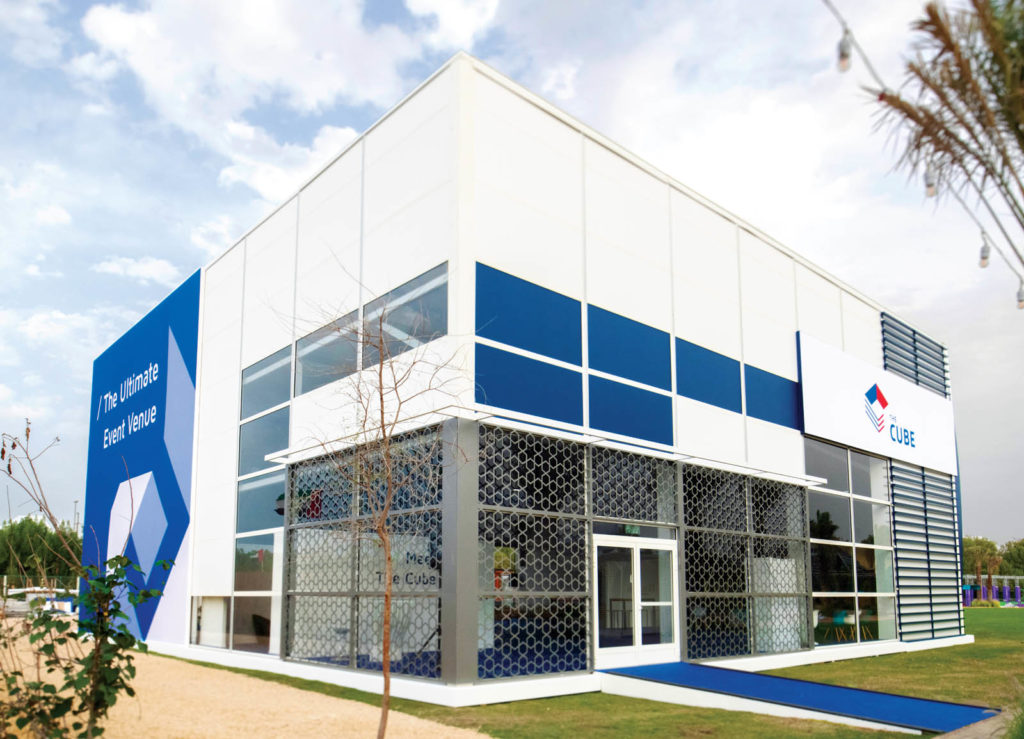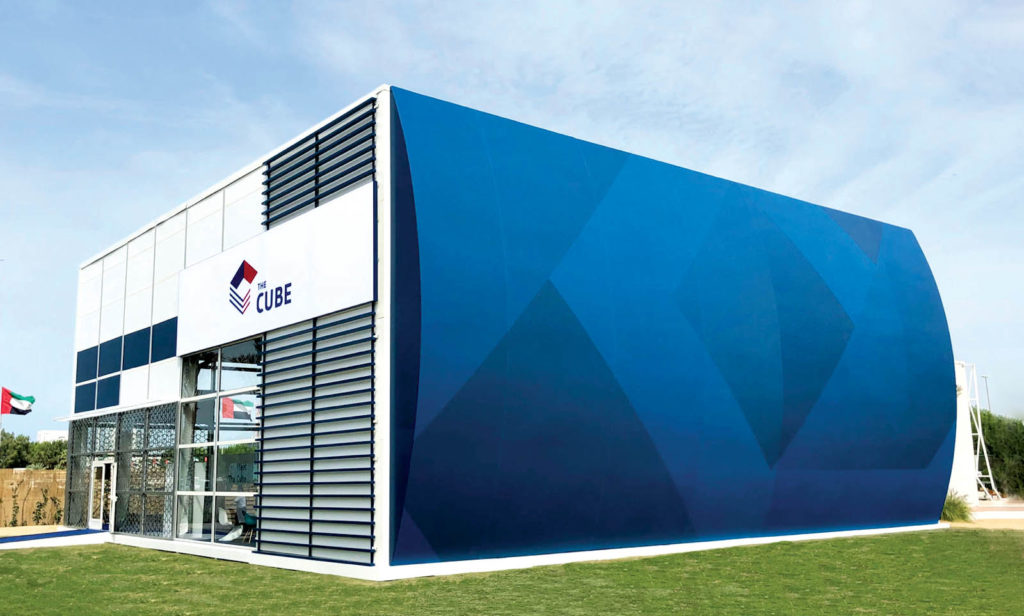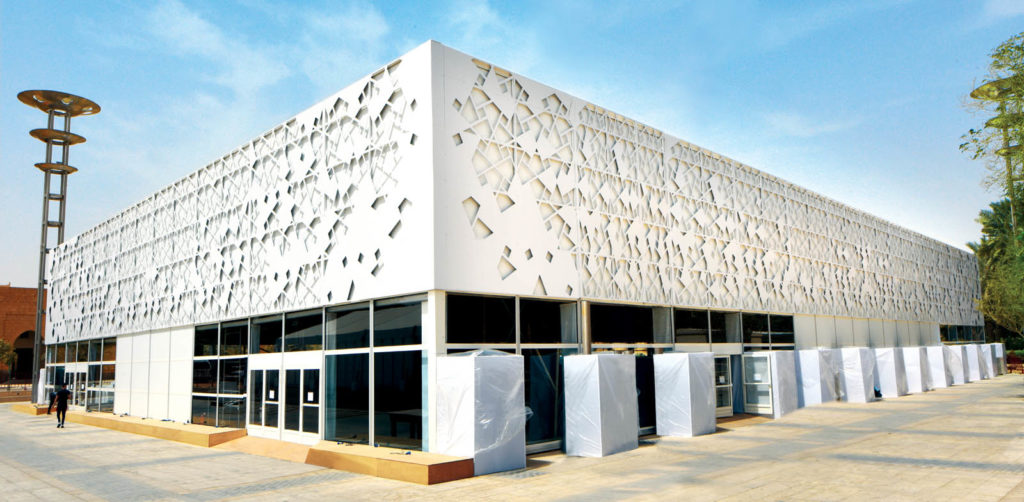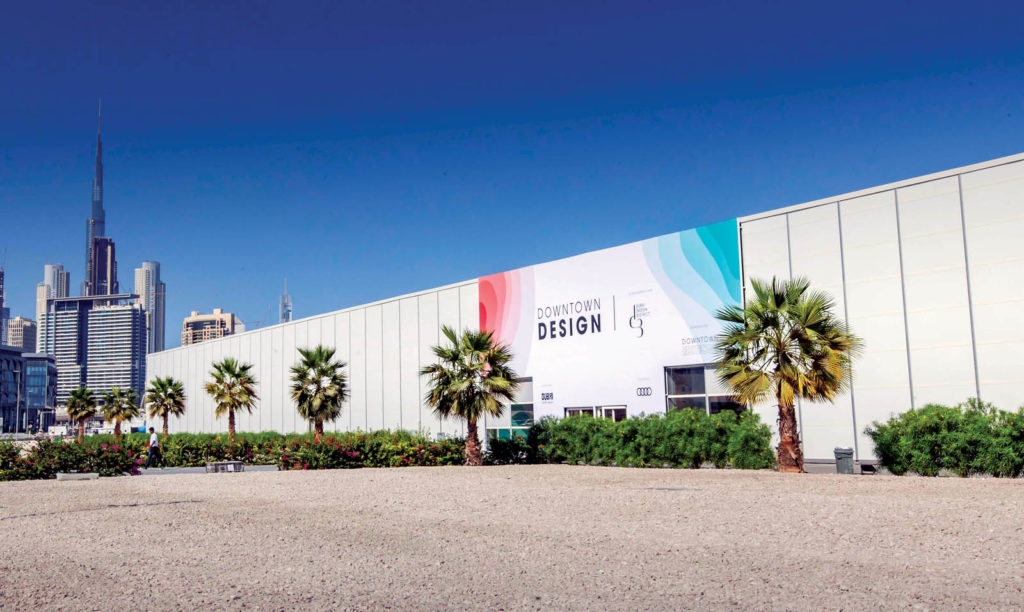Electra’s inventive flat-top temporary fabric structure helps it keep pace with Dubai’s fast-evolving event industry.
By Holly Eamon
In a world where customers increasingly expect their demands to be met instantaneously, companies that don’t prioritize active listening—or engagement—risk being left behind.
Based in the competitive market of Dubai, United Arab Emirates (UAE), event and exhibition solutions provider Electra keeps this top of mind, as demonstrated in its recent development of the Cube, which the company describes as the first flat-roof temporary structure in the UAE. “The Cube shows our capacity to listen to our clients, identify their needs and respond with innovative products,” says Marine Jeannot, marketing manager.

A demanding market
With a team count of 430, Electra has more than 25 years of experience executing the visions of local and international event management agencies, architects, designers, exhibition organizers and venue owners. But it’s not easy to keep up, even with the company’s comprehensive range of solutions, including exhibition scenography, contracting and management, event decor and setup, semi-permanent museum exhibitions, and tent and furniture rental services.
“The Middle East is an extremely dynamic and innovative events market; it’s a global hub for business, fashion and the arts, so the event calendar is always full,” Jeannot says. “That makes guests both sophisticated and demanding. Clients are always searching for new and exciting high-end solutions, and their needs are not always met by the available venues.”
Dubai, she notes as an example, boasts exclusive hotels and traditional banquet rooms, conference rooms and exhibition halls in all shapes and sizes. But when no existing place meets all technical and aesthetic requirements, event planners turn to flexible temporary structures.
The climate also plays a role. In an environment that often hovers around 100 degrees F, clients need semi-permanent solutions to cover terraces or pool areas and expand dining space capacity.

Surpassing standards
“Customizing a venue to your exact specifications is the ideal solution when you need to up the innovation quotient and increase the wow factor,” Jeannot says. “Our challenge is to offer last-minute, highly customizable solutions at competitive prices. Projects are generally confirmed only a few days before the actual event, and we are competing with both international and local suppliers offering low-cost solutions that often don’t comply with Health, Safety and Environment (HSE) standards.”
Meeting HSE standards is a widespread challenge across the region, Jeannot explains, because the workforce is not well-trained on basic safety measures or hazards related to their work. “Our dedicated HSE department is in charge of identifying all hazards and mitigating risks,” she says. “This includes engaging employees to embrace work prevention and providing them with the right equipment and training.”
To meet fabric quality demands, Electra uses only fire-retardant fabric imported from Europe. And to avoid relying on subcontractors, the company has its own production facilities equipped to print large quantities of fabric within short time periods and produce special decorative items, such as upholstered furniture, banners and stickers.

Quick customization
What’s harder to satisfy is clients’ insatiable quest for creativity. “We wanted to offer a modern, versatile and temporary venue that is quick to build, cost-effective and, most importantly, does not look like a tent,” Jeannot says. Enter the Cube. “We did a lot of research until we reached the ideal design solution providing a flat-roof structure that closely resembles permanent buildings. The Cube allows event organizers to push the boundaries of their creativity and turn literally any space into a canvas for their design vision. It gives them total control over every aspect of their event: size, layout, branding, look and feel, and even temperature.”
Available in widths from 10 to 40 meters and heights from 5 to 9 meters, the Cube is easily customizable. Top to bottom, it consists of interchangeable panels, allowing for mashrabiya-like screens (a traditional Arabic design motif and architectural element), clear or tinted windows, and blackout wall options. On average—but depending on site constraints—a 1,000-square-meter Cube with a 6-meter-height can be installed in three days (panels and flooring included) and dismantled within two days.
Top panels in some other flat-line structures are not customizable and need to be constructed separately for each structure, which costs more and takes more time. The Cube’s open roof is inflatable and pressurized for improved insulation, reducing operating costs. It also allows for concealment of any “unsightly elements” that go into making events possible, Jeannot says, like generators or air handlers, ensuring the overall look stays trim and streamlined.
Because of the second-skin fixing system integrated into the structure’s frame, it can be completely covered without producing and installing another fixing system. This not only offers clients endless branding possibilities but also significantly reduces the cost and time needed to erect the structure. The skins are all printed in-house at Electra. A 40-meter facade can be customized in less than a day and two days maximum with a complete mashrabiya cladding on the full height. Once printed, the panels can be changed instantly.
“Our priority in developing this product was to make sure it can be easily, safely and efficiently set up, customized and dismantled,” Jeannot says. “As with all our temporary structures, the Cube was developed in Europe to guarantee the best standards of quality and safety. Flame-retardant materials are standard, and we also ensure safe entry and exits, which unfortunately is not the case with all tent suppliers in the Middle East.”

Test and respond
When Electra first introduced the Cube, the company invited key clients to tour a demonstration structure and experience its full potential. “We received great feedback,” Jeannot says, “especially from designers who immediately understood the opportunities it creates. The Cube offers the ultimate convenience because it can be set up in virtually any location.”
A few weeks after its November 2018 launch, a 6,400-square-meter Cube was used to host Downtown Design, the largest design fair in the region. During the same month, Electra installed a 15-by-30-meter Cube for an event held next to Burj Khalifa, a popular skyscraper in Dubai, and concealed it under an uneven backlit second skin. And just a few months ago, the company mounted several structures in Saudi Arabia to host an international governmental conference and a high-profile wedding.
As any company knows, innovation is not a one-time achievement but an ever-expanding objective. “Saudi Arabia is seeing a huge growth in demand for temporary structures, and this is forecast to increase even more in the coming years as it ramps up local entertainment and cultural activities,” Jeannot says. “Meeting this new rising demand is one of the challenges we are preparing for.”
In 2020, Dubai will host the World Expo, which will be the largest event ever staged in the Arab nation. More than 190 countries are expected to participate, with millions of visitors from around the globe. “With this on the horizon, we see the Cube as the ideal structure to host semi-permanent events or even becoming a permanent venue,” Jeannot says. “Dubai’s event industry is very fast-moving, and this is one of the reasons we will continue to pay such close attention to clients’ needs and develop special products, like the Cube, to respond to them.”
Holly Eamon is an editor and writer based in Minneapolis, Minn.
The Dubai Department of Tourism and Commerce Marketing recently announced a new incentive to drive growth across its already-bustling events industry. More venues than ever are becoming available to event planners, which means there is more competition, says Marine Jeannot, Electra’s marketing manager. “That can have a negative impact on the temporary structure market by reducing the demand for them. On the other hand, these same new venues also need temporary structures to cover existing spaces in the summer, for example, or to expand seating flexibility for a wedding. So, the growth is also having a positive impact by driving demand.”
 TEXTILES.ORG
TEXTILES.ORG


